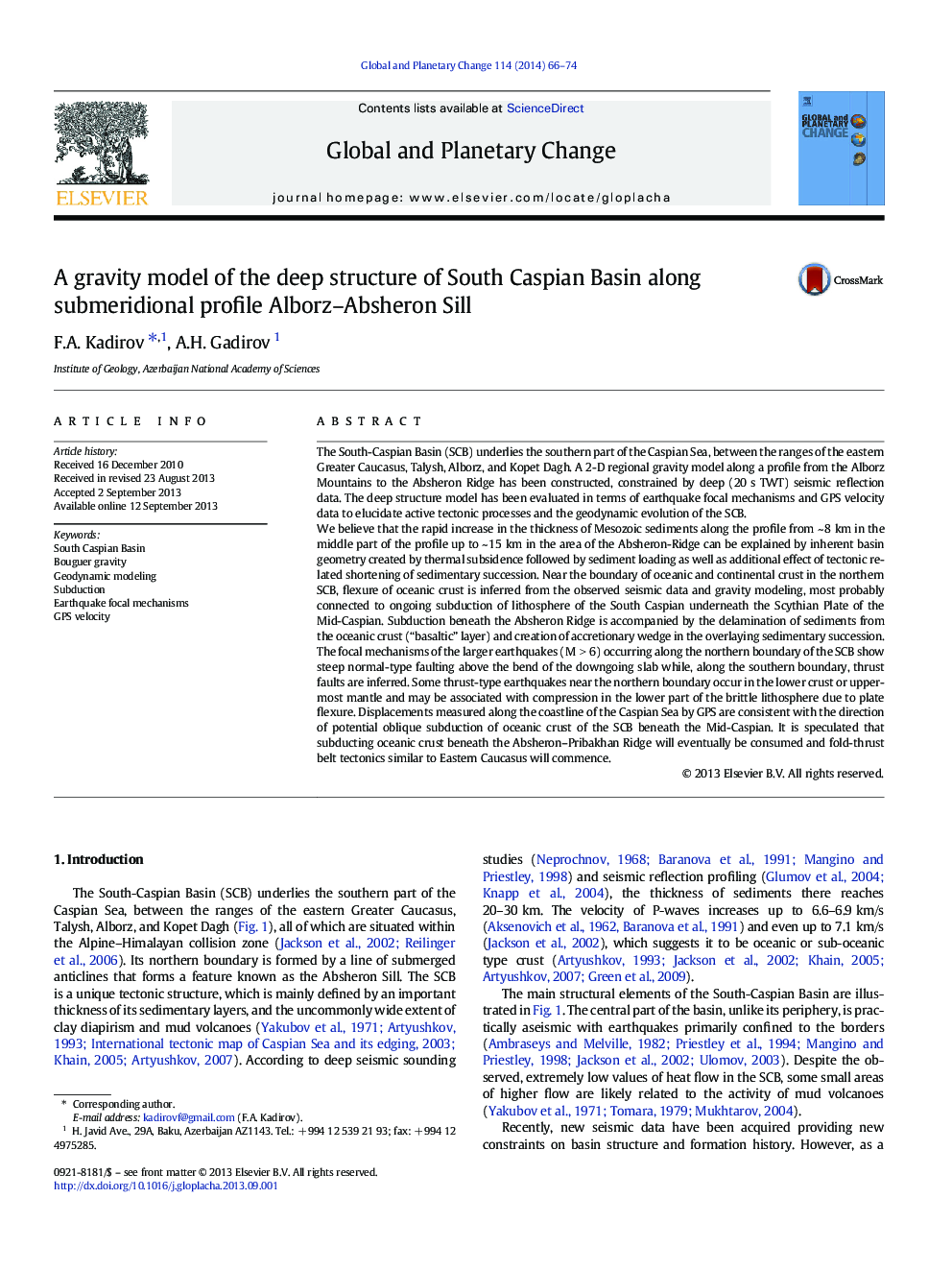| کد مقاله | کد نشریه | سال انتشار | مقاله انگلیسی | نسخه تمام متن |
|---|---|---|---|---|
| 4463453 | 1621667 | 2014 | 9 صفحه PDF | دانلود رایگان |
• We model South Caspian Basin by Bouguer gravity and 2D seismic data.
• We revealed geometry of basaltic and Mesozoic layers.
• We considered focal mechanism and compared with the structure.
• Direction of subduction zone is analysed with the modern horizontal GPS data where the recent movements are consistent with the orientation of subducting plate.
The South-Caspian Basin (SCB) underlies the southern part of the Caspian Sea, between the ranges of the eastern Greater Caucasus, Talysh, Alborz, and Kopet Dagh. A 2-D regional gravity model along a profile from the Alborz Mountains to the Absheron Ridge has been constructed, constrained by deep (20 s TWT) seismic reflection data. The deep structure model has been evaluated in terms of earthquake focal mechanisms and GPS velocity data to elucidate active tectonic processes and the geodynamic evolution of the SCB.We believe that the rapid increase in the thickness of Mesozoic sediments along the profile from ~ 8 km in the middle part of the profile up to ~ 15 km in the area of the Absheron-Ridge can be explained by inherent basin geometry created by thermal subsidence followed by sediment loading as well as additional effect of tectonic related shortening of sedimentary succession. Near the boundary of oceanic and continental crust in the northern SCB, flexure of oceanic crust is inferred from the observed seismic data and gravity modeling, most probably connected to ongoing subduction of lithosphere of the South Caspian underneath the Scythian Plate of the Mid-Caspian. Subduction beneath the Absheron Ridge is accompanied by the delamination of sediments from the oceanic crust (“basaltic” layer) and creation of accretionary wedge in the overlaying sedimentary succession. The focal mechanisms of the larger earthquakes (M > 6) occurring along the northern boundary of the SCB show steep normal-type faulting above the bend of the downgoing slab while, along the southern boundary, thrust faults are inferred. Some thrust-type earthquakes near the northern boundary occur in the lower crust or uppermost mantle and may be associated with compression in the lower part of the brittle lithosphere due to plate flexure. Displacements measured along the coastline of the Caspian Sea by GPS are consistent with the direction of potential oblique subduction of oceanic crust of the SCB beneath the Mid-Caspian. It is speculated that subducting oceanic crust beneath the Absheron–Pribakhan Ridge will eventually be consumed and fold-thrust belt tectonics similar to Eastern Caucasus will commence.
Journal: Global and Planetary Change - Volume 114, March 2014, Pages 66–74
